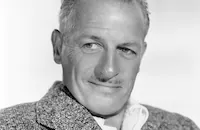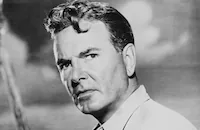He may not be as well-known to modern audiences as Hercule Poirot or Sherlock Holmes, but at one time the character of Bulldog Drummond commanded comparable popularity to those more eminent sleuths, and he remains a key creation in the annals of British detective fiction. Hugh ‘Bulldog’ Drummond was conceived as a compulsive adventure-seeker still invigorated by his service in World War I. One moment he is on the cusp of setting into the sedentary lifestyle of a retired London gentleman; the next he is hot on the case of his umpteenth mystery. Originally appearing in the eponymous mystery novel by H.C. McNeile in 1920, by the end of the decade Drummond had taken root as a full-fledged film series in both Hollywood and the United Kingdom.
Arrest Bulldog Drummond belongs to Paramount’s prolific series of Drummond pictures of the late 1930s. The character was originally portrayed onscreen by such stars as Ronald Colman and Ray Milland. By the time this film premiered, B-movie lead John Howard hadmade the role his own, and part of his achievement is his continuation of the unflappable, wise-cracking, physically nimble persona captured by Colman. (Howard’s physical resemblance to Colman also explains his casting as the latter’s brother in the previous release Lost Horizon, 1938.) R eginald Denny and E.E. Clive reprise their roles as Drummond’s wartime chum and manservant, respectively. It is H.B. Warner’s second go-round in the role of Drummond’s Scotland Yard ally Colonel Nielsen, having taken it over from no less than John Barrymore the year before.
Of particular note among the cast is Heather Angel, who dilutes some of the gentleman’s club atmosphere in a humorous turn as Drummond’s forever-on-hold fiancée. Arrest Bulldog Drummond is her second appearance in the series, and the perpetual delaying of the couple’s wedding is now firmly cemented as one of the series’ many lively running gags.
At this juncture in the Drummond saga, the screenplays have reached the outer limits of credulity. Arrest Bulldog Drummond is a compact espionage thriller that involves a death ray that can detonate targets at great distances, which falls into the hands of a ruthless master criminal played by George Zucco, whose signature weapon is a walking cane appended by a manta ray’s stinger. It’s all very silly, but it does have a certain historical resonance. Released less than a year before the start of World War II, the film addresses the mounting destructiveness of military technology and the ease with which instruments of peace may be turned into weapons of war. Over the course of so many installments, this hero of the First World War has evolved to meet the challenges of a deadlier era in the art of espionage.
Even in their most rote, B-movie incarnation, the Drummond films made at Paramount never lacked for A-list talent behind the scenes. The film was photographed by Ted Tetzlaff, who was already a veteran of the glittering Paramount style, with a particular specialty for the luxuriant look of the studio’s screwball comedies. By the time he photographed Arrest Bulldog Drummond, Tetzlaff had already worked on Easy Living (1937) and, at Universal, My Man Godfrey (1936). While Arrest Bulldog Drummond lacks the budget of those films, Tetzlaff’s remarkable talent is very much evident. Dexterous tricks of lighting and camera movement provide visual dimension where it is least expected. There is one especially incendiary set-piece concerning a fireworks warehouse which must have been a field day for the veteran cinematographer.
Arrest Bulldog Drummond is ludicrous, cheaply made and over before it seems even to have begun; in short, an exemplary work of B-movie entertainment. Paramount would later sell its Drummond films to television in the 1950s, all but ensuring their relegation to the public domain. Adventure lovers of all stripes would do well to seek out these films.

























